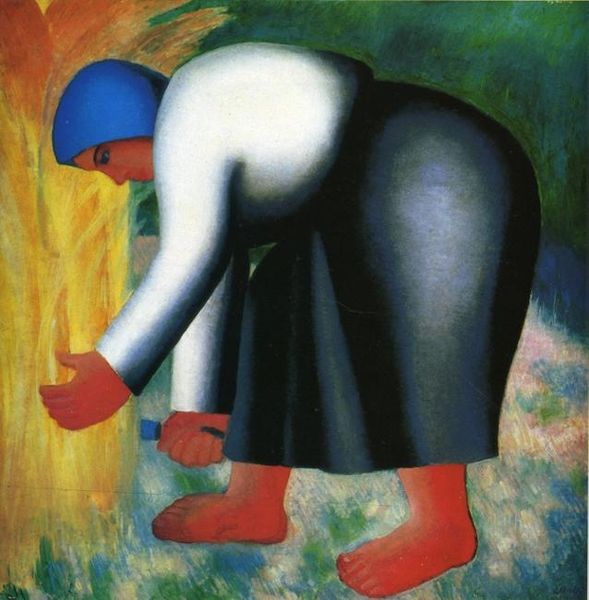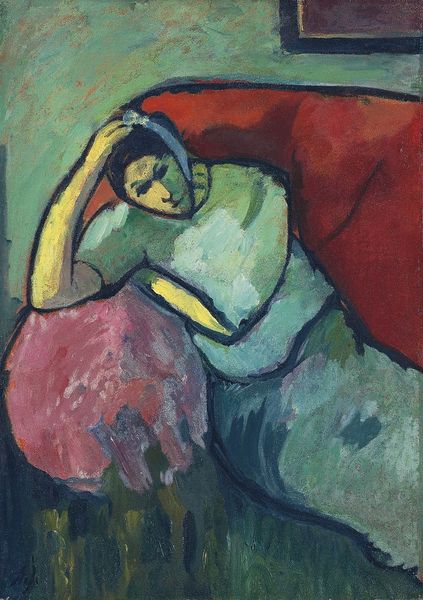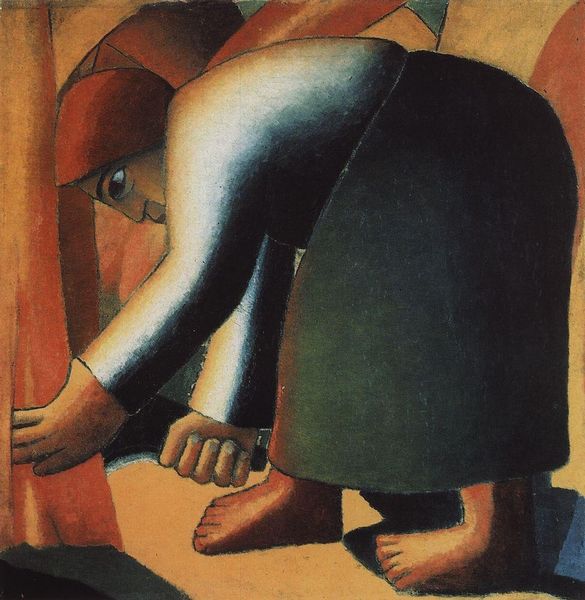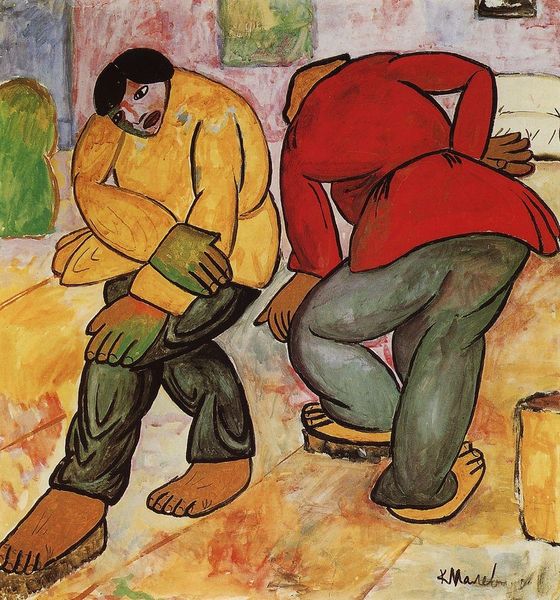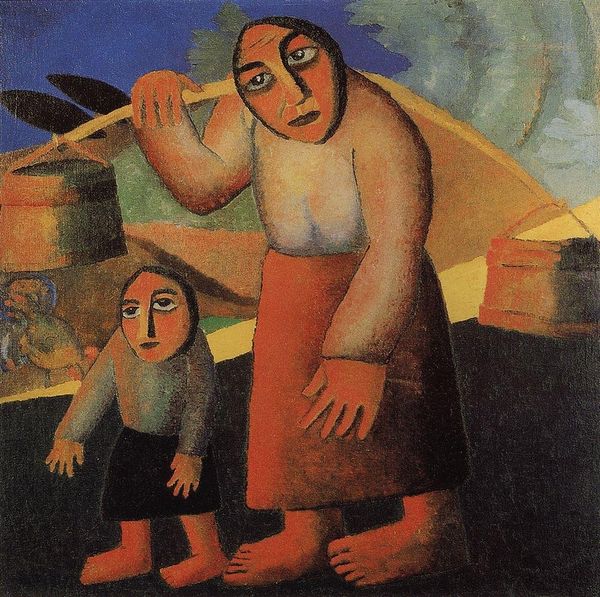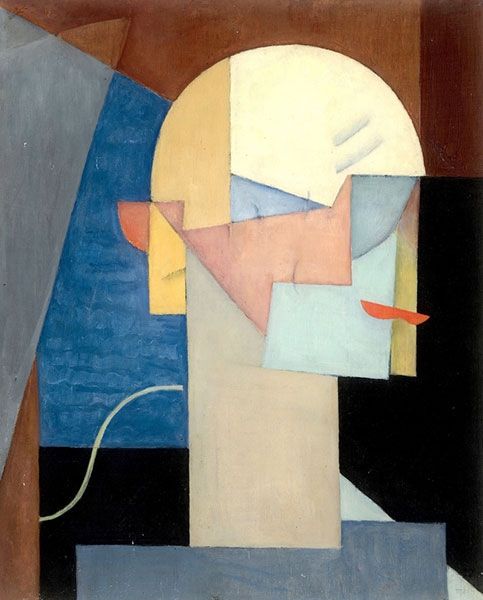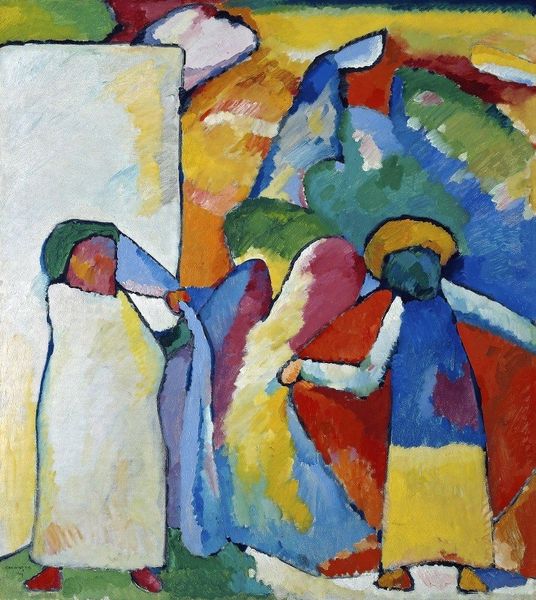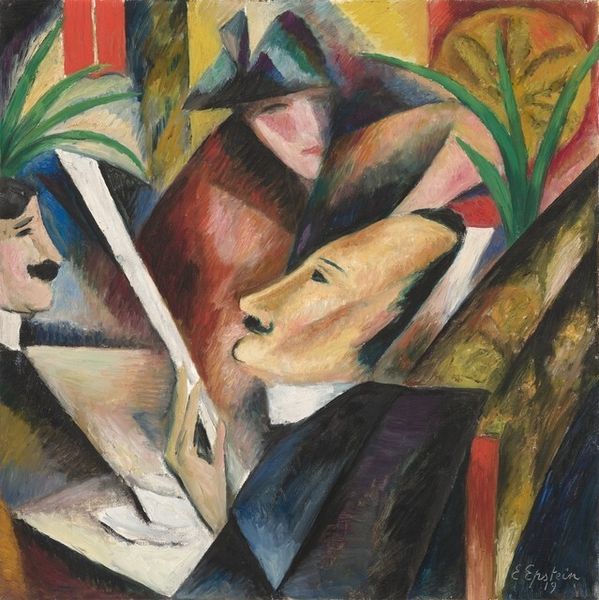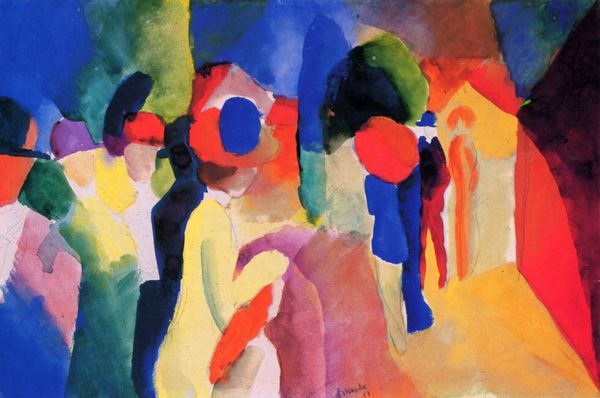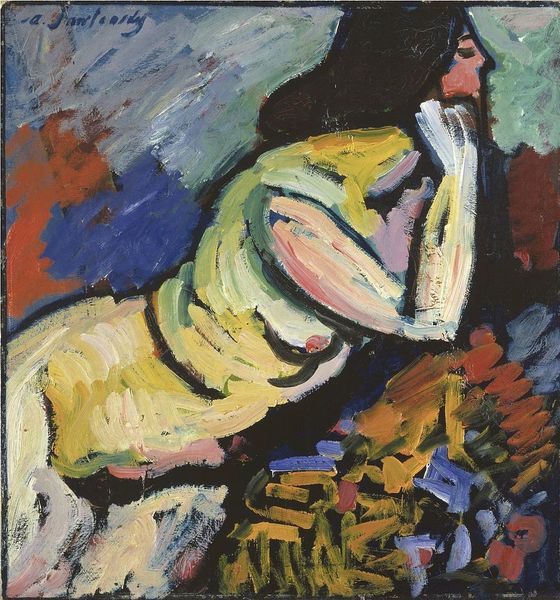
painting, oil-paint
#
painting
#
oil-paint
#
landscape
#
soviet-nonconformist-art
#
figuration
#
oil painting
#
geometric
#
genre-painting
#
realism
Dimensions: 29.5 x 31.3 cm
Copyright: Public domain
Editor: Here we have Kazimir Malevich's "Reaper," painted in 1929, using oil paint. It feels like a somber scene despite the bright colors. There's something unsettling about the simplified form of the figure, so unlike his earlier Suprematist work. What do you see in this piece, considering its historical context? Curator: That feeling of unease is understandable. Malevich painted this during a period when abstract art was being heavily criticized by the Soviet regime. He was pressured to return to figuration, which makes "Reaper" not just a landscape, but a complicated negotiation with artistic control and state expectations. Look at how the vibrant colors are used to depict a peasant engaged in labor – it seems celebratory at first, doesn't it? Editor: It does, almost like socialist realism, but something is…off. It feels too simplified and a bit impersonal to be pure propaganda. Curator: Precisely. Consider how the “Reaper” fits into the narrative the Soviet state wanted to construct – glorifying the collective farm. Malevich might have intended a sincere return to genre painting; do you see something in the image that defies it? Editor: I notice that the reaper’s face is obscured and how the work does not look as academic or sophisticated as art made by members of The Association of Artists of Revolutionary Russia, maybe this picture offers subtle resistance by focusing more on form and color than an idealized image of labour? Curator: Excellent observation! Malevich subtly challenged the demand for straightforward socialist realism by infusing it with his Suprematist sensibility. So how might institutions – museums and galleries - affect such displays of propaganda? Editor: They might amplify them, becoming tools of the regime, or they could, in retrospect, offer critical perspective by exhibiting them alongside pieces that challenge those ideas. Curator: Exactly. By understanding the push and pull of cultural and political forces, we gain a richer view of how Malevich, and the art world at the time, really functioned. It certainly makes me think twice about how we display such loaded art today.
Comments
No comments
Be the first to comment and join the conversation on the ultimate creative platform.
